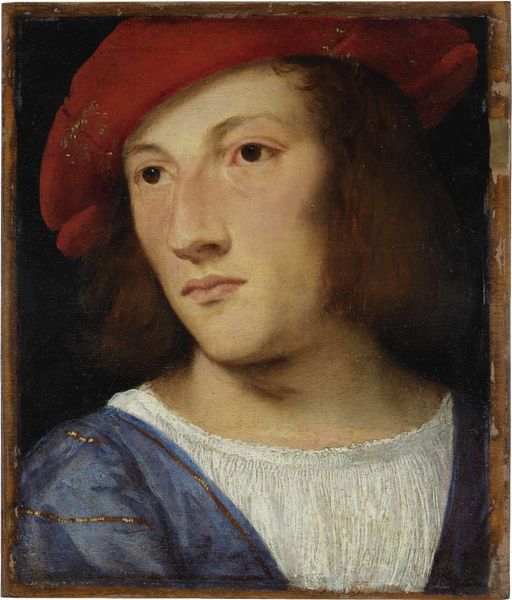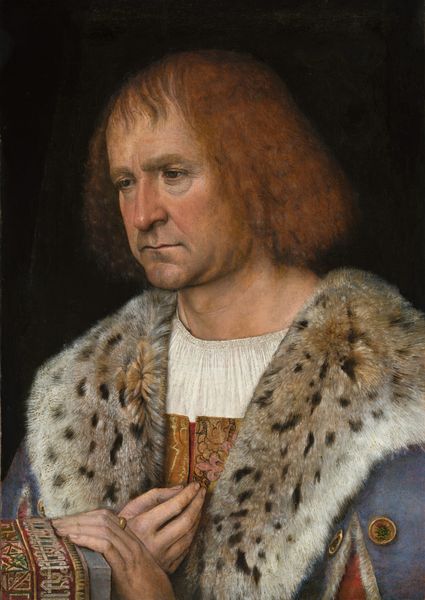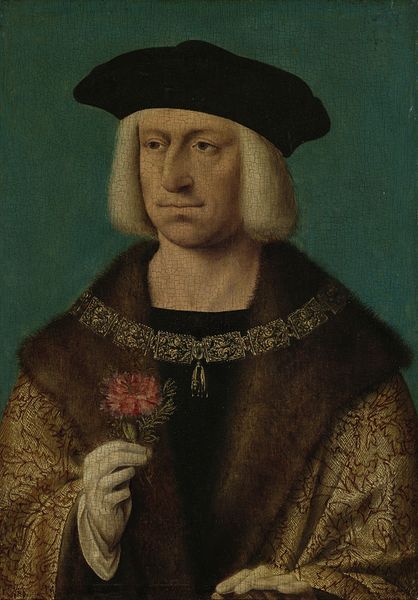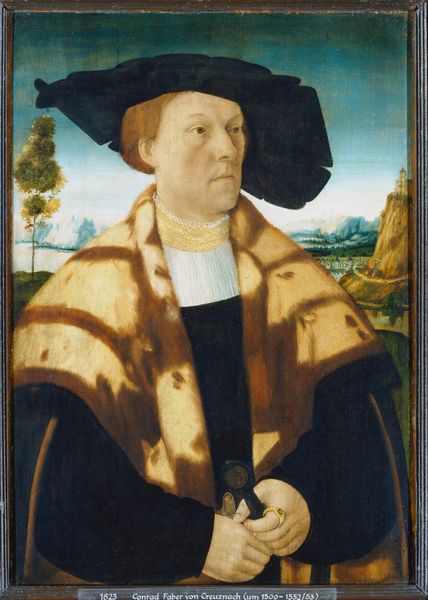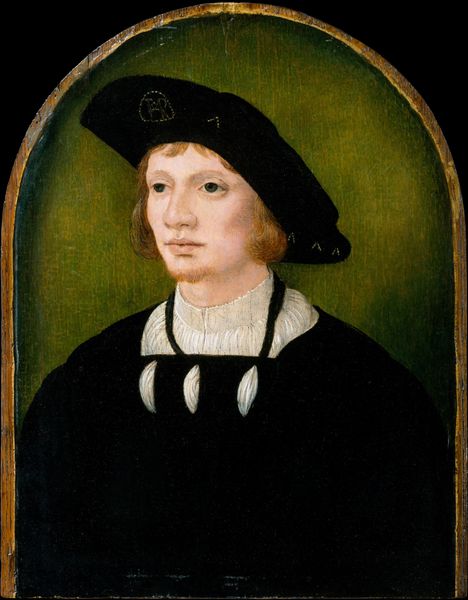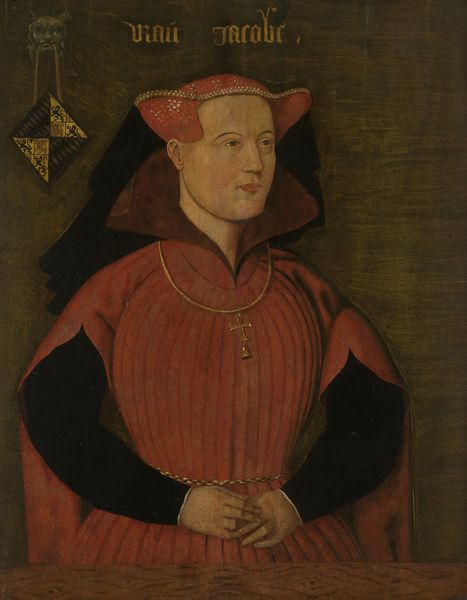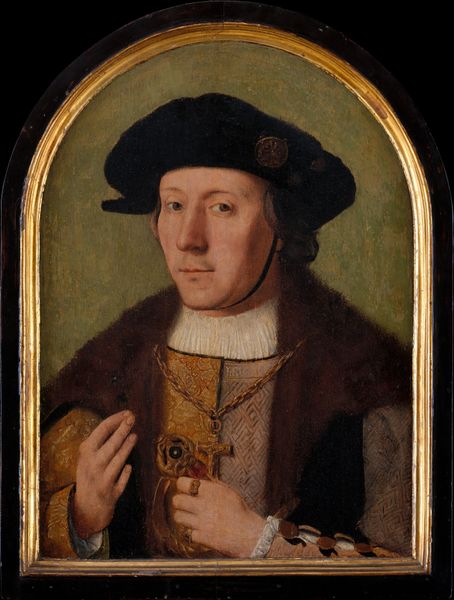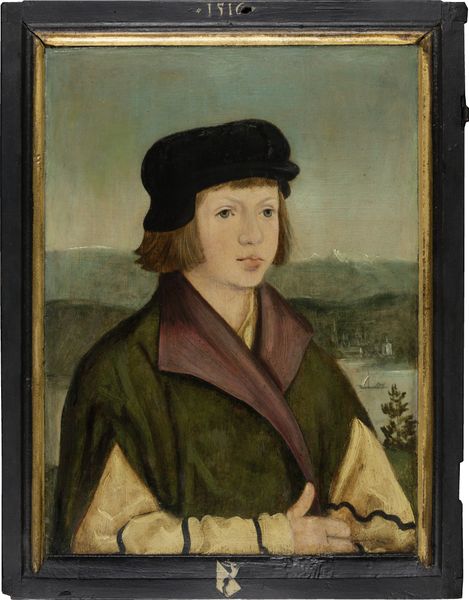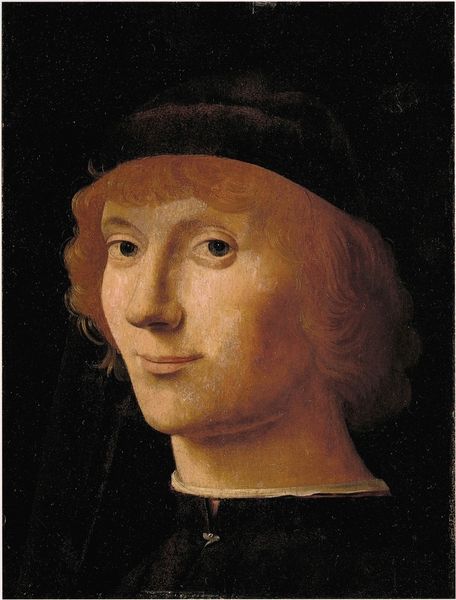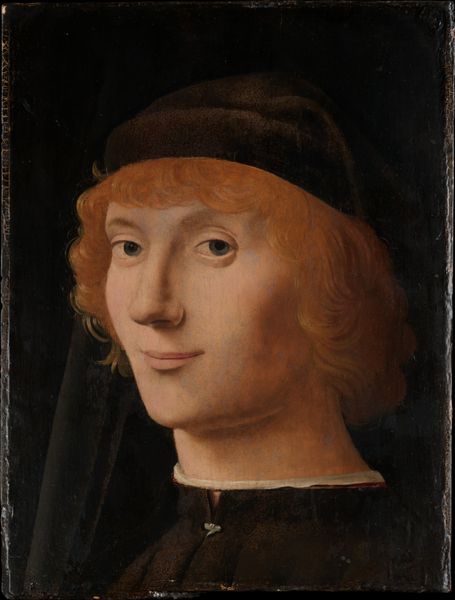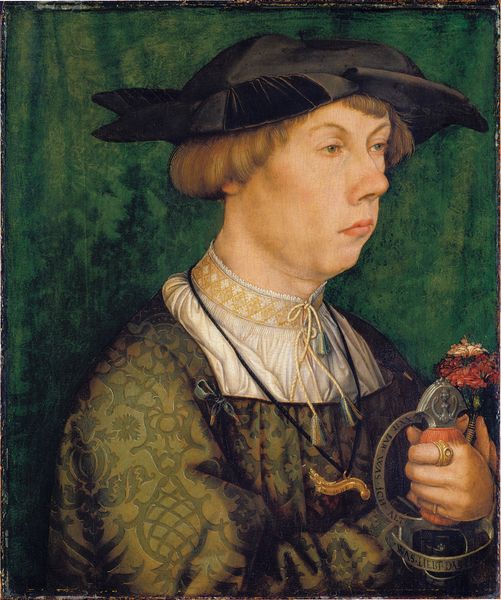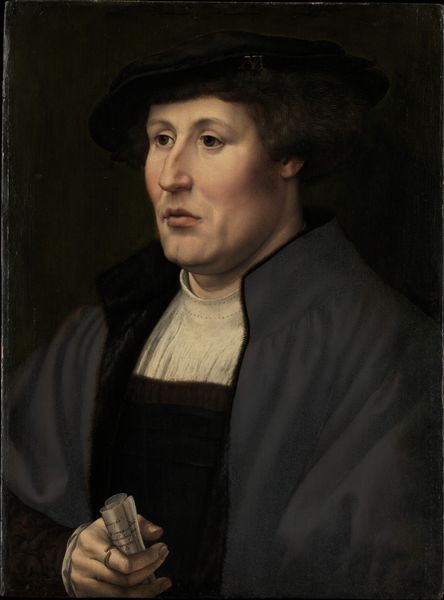
painting, oil-paint
#
portrait
#
painting
#
oil-paint
#
figuration
#
11_renaissance
#
history-painting
#
northern-renaissance
Dimensions: support height 39.8 cm, support width 29.3 cm, sight size height 39 cm, sight size width 28.3 cm, frame height 53.2 cm, frame width 42.3 cm
Copyright: Rijks Museum: Open Domain
Jan Gossart’s portrait of Floris van Egmond was made with oil on wood panel, an exacting process involving many thin layers of paint, each carefully built up to create luminous effects. The smooth surface is remarkable, especially when you consider that the panel itself would have been prepared by hand, planed and sanded perfectly smooth. The artist would have been assisted in this process by workshop assistants, who would have also been responsible for grinding and mixing the pigments. Look closely, and you’ll see how the texture of the fur trim around Floris’s shoulders contrasts with the flat black of his hat, and the embroidered details of his tunic. These surfaces tell us a lot about the social context of the painting. Oil paint was associated with wealth and status, and the artist's mastery of this medium underscored his own value, and that of his sitter. The materials and the way they were handled speak of a hierarchical society, one in which skilled labor and expensive materials were marshaled to create an image of power. Thinking about the making of this portrait gives us a richer understanding of the period, challenging the idea that art is only about what is represented, and reminding us of the importance of materials, making, and context.
Comments
No comments
Be the first to comment and join the conversation on the ultimate creative platform.
